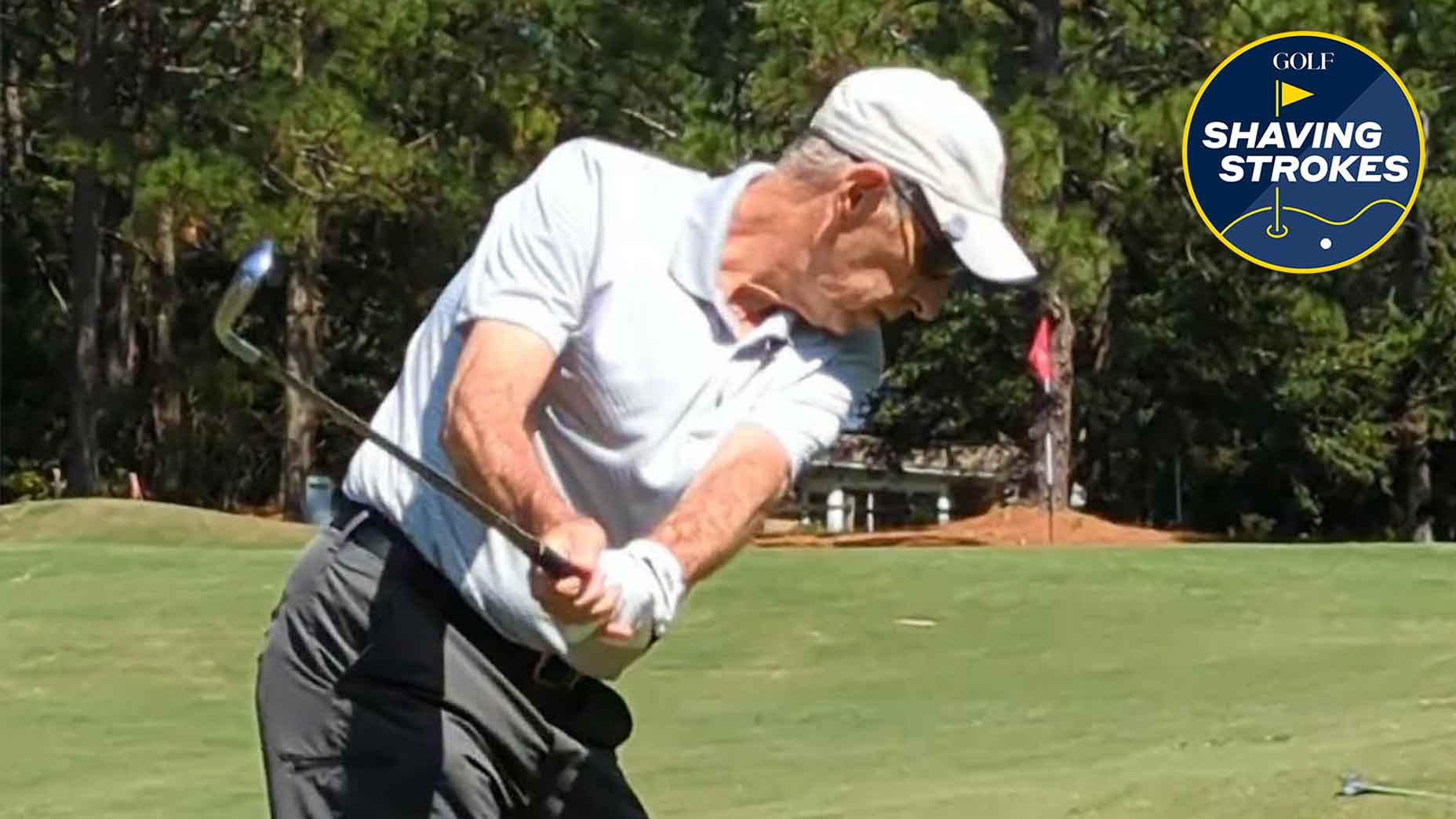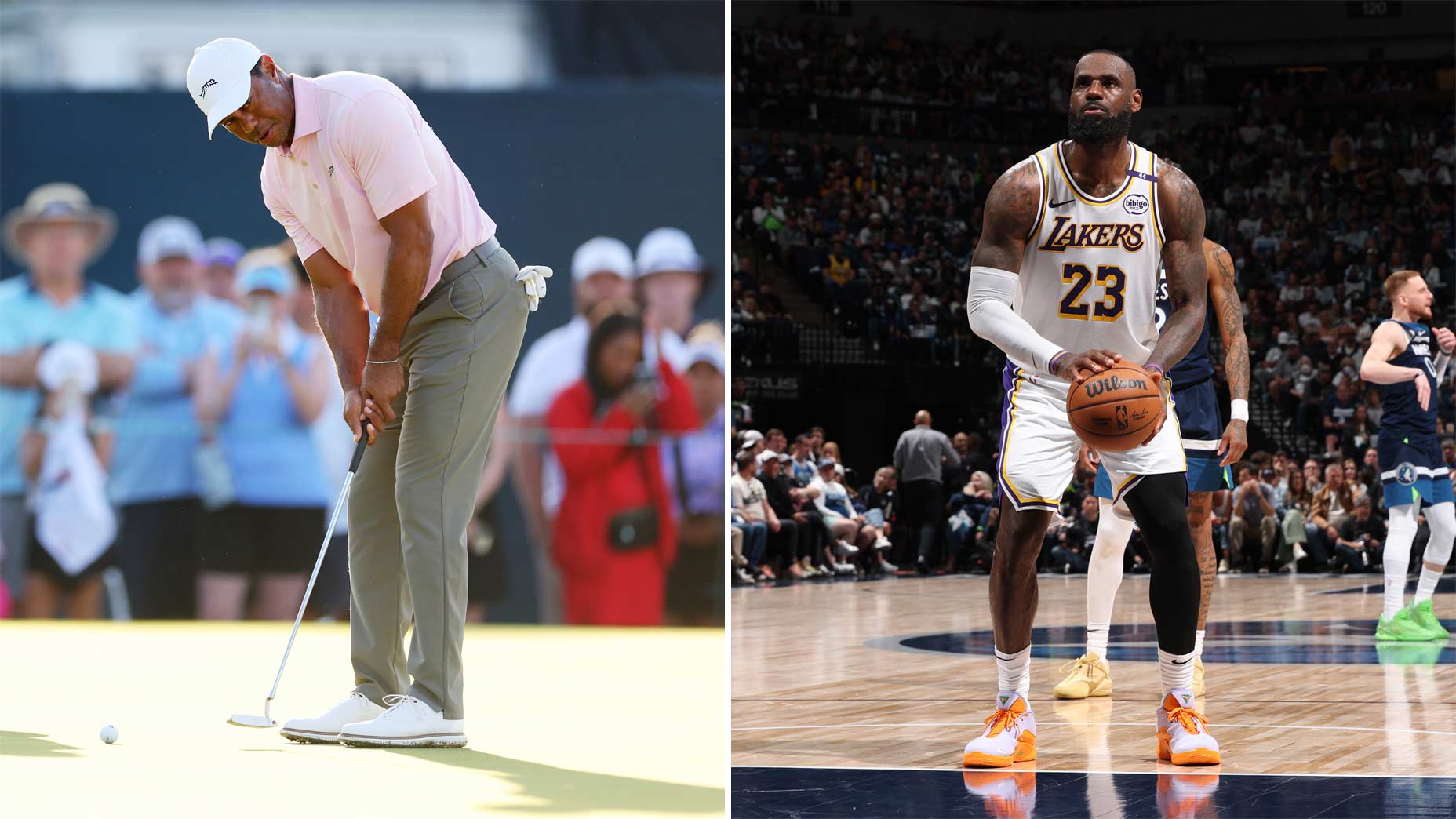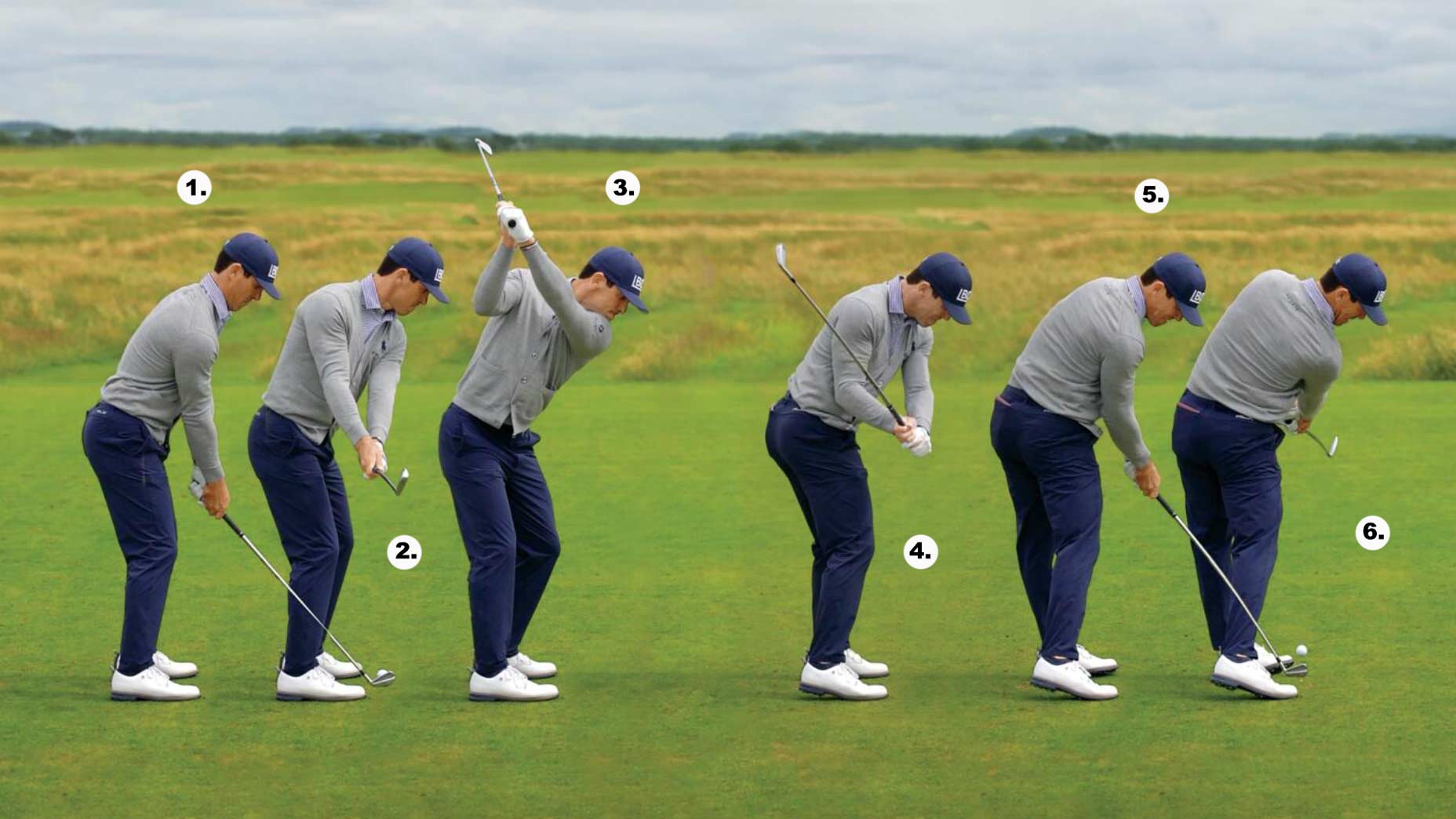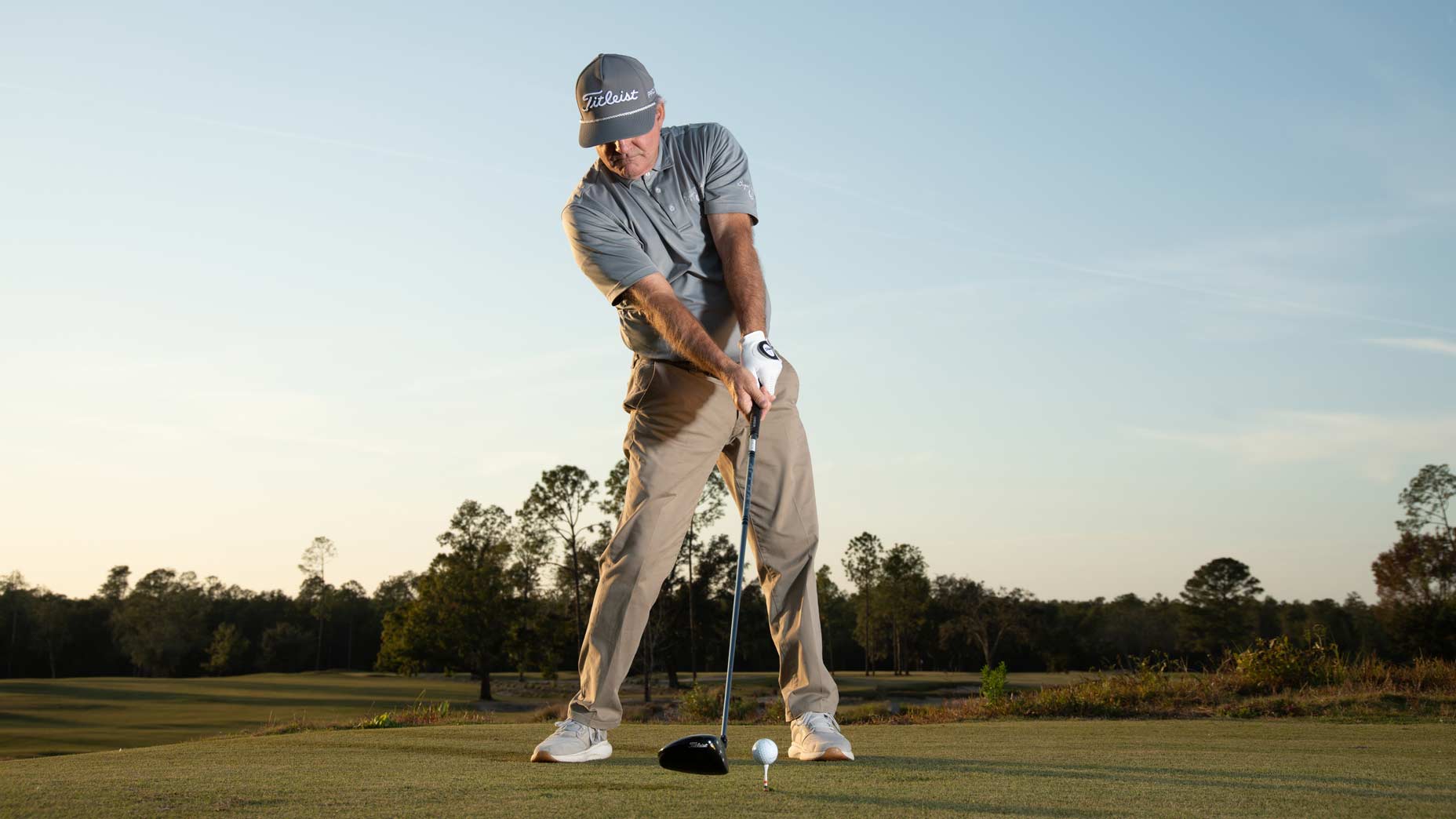Welcome to Shaving Strokes, a GOLF.com series in which we’re sharing improvements, learnings and takeaways from amateur golfers just like you — including some of the speed bumps and challenges they faced along the way.
Struggling with chunked or skulled wedge shots? Yeah, join the club!
I can’t tell you how many times I’ve had a fantastic tee shot followed by a pretty good approach shot, leaving me with an up-and-down to make par or even birdie (on a par-5) — and then struggle to even get on the green when using my wedge, which just adds silly strokes to my scorecard.
Build a disaster-free chipping game by making 1 subtle changeBy: Nick Dimengo , Josh Zander, GOLF Top 100 Teacher
The main culprit has been my 60-degree (lob wedge) — which is one of those clubs nearly every amateur struggles to hit — but it seems like every option I use results in a mishit that mentally defeats me. It’s even gotten to the point where I’m just ditching wedges altogether and just roll with an 8-iron, choking down on the grip and using a putt-like motion.
Sure, this works sometimes, but it sure as hell isn’t sustainable if I’m serious about breaking 80 for the first time.
So how can my fellow chunkers and skullers overcome this all-too-common problem and start saving shots from around the greens? I tapped GOLF Top 100 Teacher Mike Malizia, the director of instruction at Admiral’s Cove, to provide his expert tips below.
Do this to avoid skulled or chunked wedge shots
Golf can be full of frustrating results, but nothing’s worse than walking off a hole with a bogey (or worse) because of either a chunked shot that goes three feet in front of you or a skulled shot that rolls across the green did you in.
“Putting can be the great equalizer in golf,” Malizia says, “but to really lower your scores in a hurry, you need to have the ability to pitch your ball closer to the hole — which helps you avoid longer, more difficult putts.”
According to Malizia, there are a few traits that every great short game player has on pitch shots.
How a 76-year-old mastered swing tempo to improve his pitch shotsBy: Nick Dimengo
“These types of players all have beautiful timing and tempo when hitting different shots around the green,” he shares. “On the follow-through, they all rotate their chest through the finish, and, in their downswing, they keep their weight moving towards the target.”
However, he says, understanding the proper mechanics is key to consistency on these types of shots.
“If you can’t execute the desired shot with proper mechanics, then steps one, two, and three are utterly useless.”
To help improve your wedge shots on pitches, Malizia demonstrates a drill that will help you avoid chunks or skulls, leading to better contact and a restored confidence in the short game.
This pitching drill will build more consistency
While taking your pitching setup, place an alignment rod or another golf club in the middle of your stance.
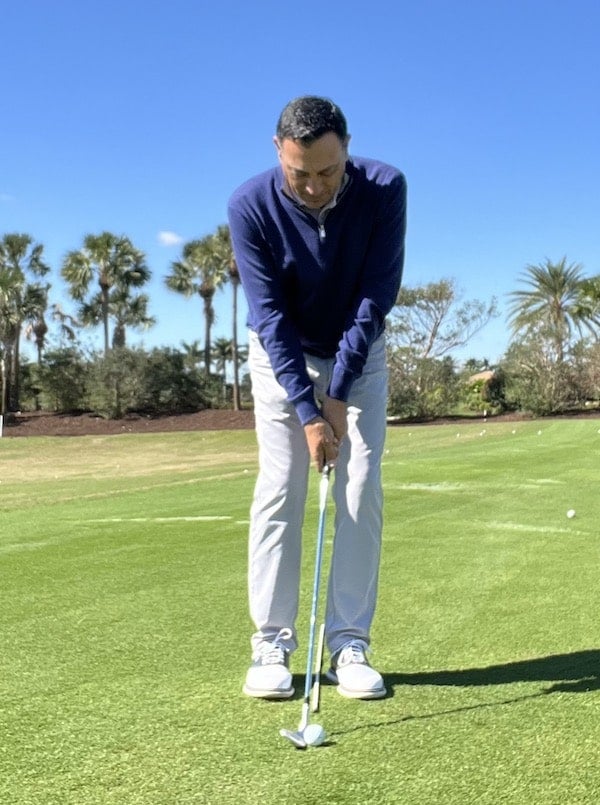
Next, take your lead hand and put it on your sternum, making sure the elbow on the same arm is pointing toward the target.
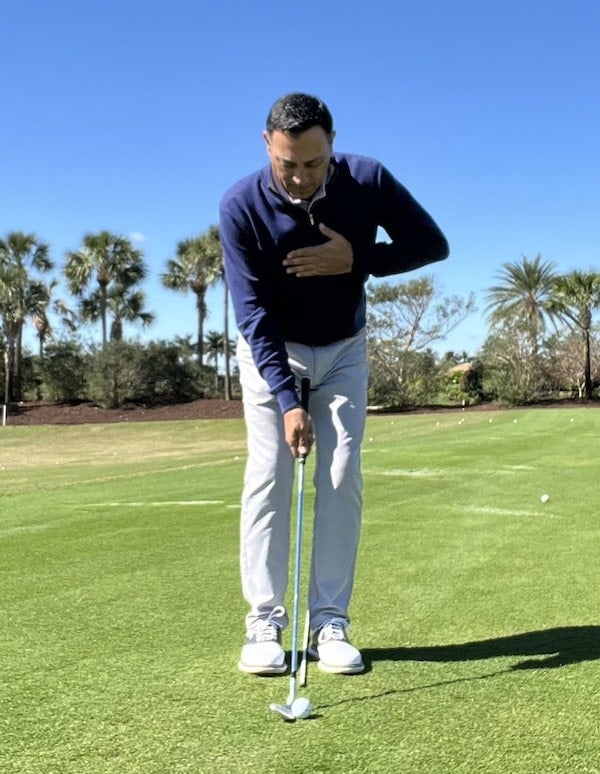
Finally, make a pitching motion and hold your finish position (which should look like the photos below). Upon doing so, be sure to look for the three keys below the image.
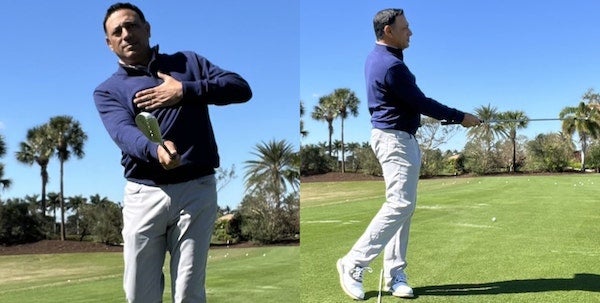
First, by only using your right hand, it’ll force you to have great timing and tempo. Second, your lead elbow (which is pointing at the target) should now be pointed to the left of the target. This provides the appropriate amount of chest rotation on the follow-through. Third, your trail knee, which started on the right of the alignment stick, should now be on the left side of the stick. This will ensure that your weight is moving forward on the downswing.
By trying this simple pitching drill, you can get yourself over any chipping yips and begin to see the results you expect!


